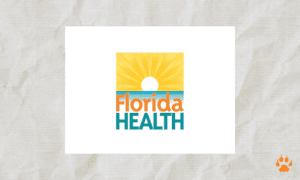The Conservancy of Southwest Florida announces a record-breaking Burmese python research and removal season of 6,300 pounds of invasive snake. This marks a milestone for the Conservancy’s python program, with more than 20 tons of Burmese pythons removed from a 200-square-mile area in Southwest Florida since 2013.
“We have been on the front line of the invasive python battle for more than a decade,” states Ian Bartoszek, wildlife biologist and Conservancy science project manager, who oversees the python program. “Removing more than 40,000 pounds of snake, carried out through some of Florida’s unrelenting wildlife habitats, is a heavy-lifting assignment. But, through years of dedicated research, we’ve developed science-based methods to track this apex predator more effectively and mitigate its damage to our native wildlife population.”
Using radio telemetry and tagged male pythons known as scout snakes, the team, including Bartoszek and Conservancy Biologist Ian Easterling, along with a field tech and python interns, currently track 40 pythons. These scout snakes help locate reproductive pythons during the breeding season, November through April. Conservancy staff monitors scout snakes across a 200-square-mile area of public and private land from Naples through the Western Everglades.
In this science-based approach, biologists target adult female pythons, attempting to suppress python reproduction. Since 2013, the team has stopped an additional 20,000 python eggs from hatching. As the program expands into new areas, long-term monitoring has shown signs of positive effectiveness of these efforts, as scout snakes increasingly struggle to locate mates or the females they find are smaller in size.
“The Burmese python is decimating native wildlife across their invaded range. Here at the Conservancy, we also rehabilitate thousands of injured native animals in the von Arx Wildlife Hospital and release them back into the wild each year. The python team’s work of reducing the local population of the invasive snake allows our native wildlife safer conditions to recover,” says Rob Moher, president and CEO of the Conservancy of Southwest Florida.
The Conservancy’s python program is one of the leading research and removal initiatives globally, with its scientists recognized for capturing the largest female python ever documented to date, measuring 18 feet long and weighing 215 pounds, as well as the largest male python on record at 16 feet and 140 pounds. Conservancy biologists have also published more than 20 collaborative scientific articles that reveal insights into python biology and behavior. These include the documented observation of an adult female python consuming a white-tailed deer, which uncovered the largest gape ever recorded for the species, and new evidence of the python’s ability to ingest prey. Pythons can consume meals over 100% of their body mass, feeding on a diet that includes more than 85 species, including deer, bobcats, foxes, rabbits, birds, various reptiles and other native wildlife.
“Burmese pythons are impressive creatures that are here from no fault of their own,” Bartoszek states. “As wildlife biologists, we have tremendous respect for all snake species. However, we understand the impact invasive pythons are having on the biodiversity in our area, and we humanely remove them from the ecosystem as part of the Conservancy’s commitment to protecting our water, land, wildlife, and future.”
The Conservancy python tracking team collaborates with Rookery Bay National Estuarine Research Reserve researchers, the United States Geological Survey, the University of Florida and the South Florida Water Management District. Funding for the program comes from private philanthropy, grants, the Naples Zoo Conservation Fund and the Fish & Wildlife Foundation of Florida. To learn more about the Conservancy’s work with Burmese pythons, visit Conservancy.org.
About the Conservancy of Southwest Florida
The Conservancy of Southwest Florida is a nonprofit environmental organization that has protected water, land and wildlife in Collier, Lee, Charlotte, Hendry and Glades counties for more than 60 years. Through environmental science, policy, education and wildlife rehabilitation, the Conservancy safeguards Southwest Florida’s natural resources for future generations.
Headquartered in Naples, Florida, the Conservancy is home to Collier County’s only native wildlife hospital and its vibrant Nature Center. Currently open to visitors, the Nature Center is undergoing a major transformation into a new, impactful community offering—the John & Carol Walter Nature Experience, set to open in 2028. This state-of-the-art facility will serve as a gateway to conservation, offering immersive exhibits, hands-on learning and expanded programs to inspire environmental stewardship and enhance the region’s quality of life.
Learn more and support Southwest Florida’s environmental future at www.conservancy.org.








